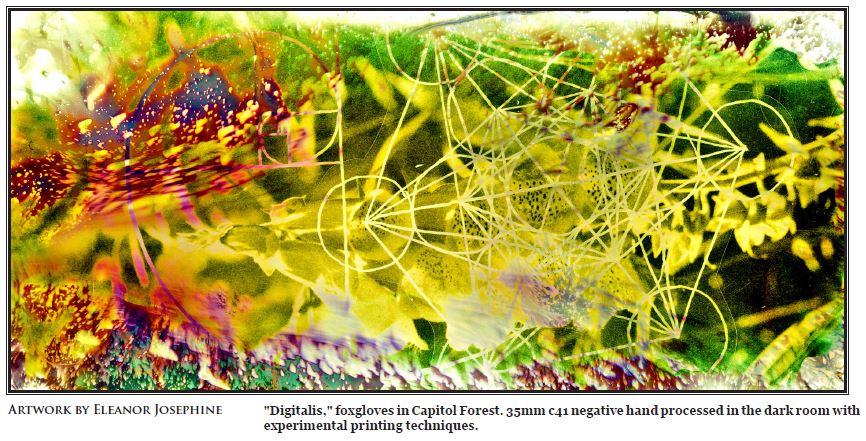Toxicology - Genetics vs. Genetically Modified OrganismsBy Ruth Shearer Long before anyone knew anything about the chemistry of genes, farmers knew how to breed animals or plants to select for traits that improved the marketability of their products. My farmer father-in-law mated a long-snouted large sow with a short-snouted small boar to select for large pigs with short snouts, which sold for top price because there was so little weight wasted. When farmers found crops that did well in the local soil and climate, they saved the seed to plant again the next year. After genes were determined to be sequences of DNA organized into chromosomes, there was a new understanding of just what was happening when two closely related strains of a species were cross-bred, or hybridized. This again allowed for the selection of choice cultivars or new breeds of animals. After the DNA sequences of genes and genomes were determined, it became possible to mix genes from unrelated species in the laboratory and get one species to produce gene products of another species. Such recombinant DNA (rDNA) experiments were done carefully and used to produce needed medicines and other products at a much lower cost than before, making them available to people who previously could not afford them. These animal products could now be made in bacteria and still be identical to the original product made in a live animal. The proteins from the expression of rDNA in living cells are called recombinant proteins. They can be purified from the bacterial "factories" that produce them, and they are identical to the products of the mammalian sources of the rDNA. Some examples of this are chymosin, an enzyme required to manufacture cheese, human insulin for the treatment of diabetes, human growth hormone for the treatment of people who are deficient in it, and human blood clotting factor VIII for treating people with hemophilia.
The U.S. Food and Drug Administration has swallowed the propaganda of the biotech companies who want to patent and profit from this technology and declared that there is no difference between real food and GMO food. This is blatantly untrue. Since the FDA has never required proper testing of GMO foods, people should have the right to choose not to eat them. Since they are so ubiquitous in our food supply now, this would require labeling of all GMO foods so that the consumer can choose to avoid being a guinea pig in a massive unrecorded experiment. This is just the basics of the difference between careful genetic research for the benefit of human health and industrial gblast eemh technology to make a profit, the patenting of seeds to control the world market and put small farmers out of business. Much of the developed world has now banned GMO foods and this means that Washington, as a food exporting state, needs to be sure its crops are not contaminated with GMOs. Ruth Shearer, Ph.D., is a retired consultant in genetic toxicology.
Back to Home page. |

 When instead of inserting a gene from a higher organism into DNA of a bacterium or other lower organism, as explained above, bacterial DNA is inserted in cells of a food or feed crop, this produces a GMO, or genetically modified organism. Bacterial plasmids, containing the desired gene and also most of the original plasmid DNA, are coated onto particles of heavy metal and blasted into the target cells with a "gene gun!" The cells are mostly disrupted, but some of those that survive this now contain a particle coated with DNA which migrates to a chromosome and integrates into it. This is very nonspecific. Unwanted bacterial genes can also be integrated into the chromosome. The new gene sequences can integrate into the middle of an important plant gene, inactivating it, or can integrate at the start of an inactive plant gene, activating it. Chromosomes broken by the blast are likely to have lost needed gene functions. The bacterial genes incorporated into the plant chromosomes form sequences never found in nature, since they are combinations of genes from species which could never mate in nature. All of this is very disruptive of the optimal functioning of the plant cells. Because these target cells are no longer like the normal food and may have very undesirable effects on whatever eats them, they should be treated like new drugs and tested for adverse health effects in rodents or other suitable lab animals before being fed to people.
When instead of inserting a gene from a higher organism into DNA of a bacterium or other lower organism, as explained above, bacterial DNA is inserted in cells of a food or feed crop, this produces a GMO, or genetically modified organism. Bacterial plasmids, containing the desired gene and also most of the original plasmid DNA, are coated onto particles of heavy metal and blasted into the target cells with a "gene gun!" The cells are mostly disrupted, but some of those that survive this now contain a particle coated with DNA which migrates to a chromosome and integrates into it. This is very nonspecific. Unwanted bacterial genes can also be integrated into the chromosome. The new gene sequences can integrate into the middle of an important plant gene, inactivating it, or can integrate at the start of an inactive plant gene, activating it. Chromosomes broken by the blast are likely to have lost needed gene functions. The bacterial genes incorporated into the plant chromosomes form sequences never found in nature, since they are combinations of genes from species which could never mate in nature. All of this is very disruptive of the optimal functioning of the plant cells. Because these target cells are no longer like the normal food and may have very undesirable effects on whatever eats them, they should be treated like new drugs and tested for adverse health effects in rodents or other suitable lab animals before being fed to people.